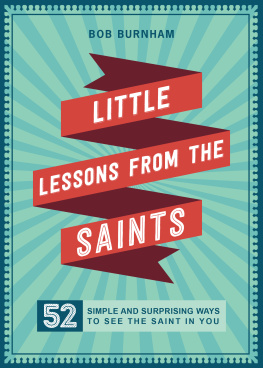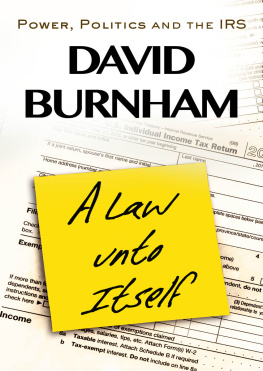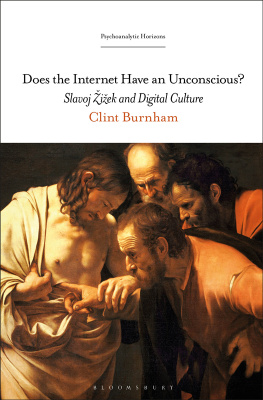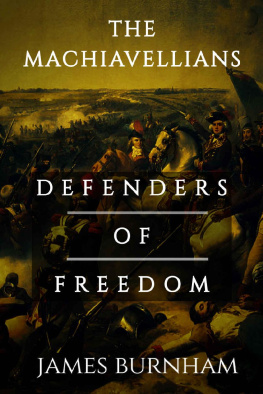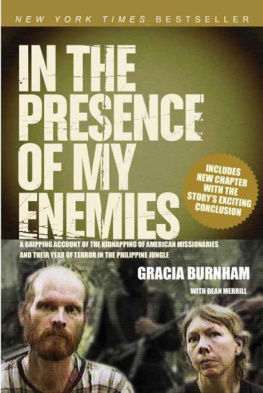First published in Great Britain in 2014 by
PEN & SWORD MILITARY
an imprint of
Pen and Sword Books Ltd
47 Church Street
Barnsley
South Yorkshire S70 2AS
Copyright Karyn Burnham, 2014
ISBN 978 1 78337 609 4
The right of Karyn Burnham to be identified as the author of
this work has been asserted by her in accordance with the Copyright, Designs and Patents Act 1988.
A CIP record for this book is available from the British Library
All rights reserved. No part of this book may be reproduced or transmitted in any form or by any means, electronic or mechanical including photocopying, recording or by any information storage and retrieval system, without permission from the Publisher in writing.
Printed and bound in England
by Page Bros., Norwich
Typeset in Times New Roman by Chic Graphics
Pen & Sword Books Ltd incorporates the imprints of
Pen & Sword Archaeology, Atlas, Aviation, Battleground, Discovery,
Family History, History, Maritime, Military, Naval, Politics, Railways,
Select, Social History, Transport, True Crime, and Claymore Press,
Frontline Books, Leo Cooper, Praetorian Press, Remember When,
Seaforth Publishing and Wharncliffe.
For a complete list of Pen and Sword titles please contact
Pen and Sword Books Limited
47 Church Street, Barnsley, South Yorkshire, S70 2AS, England
E-mail:
Website: www.pen-and-sword.co.uk
There are several people who contributed to this work in many ways, both large and small. My grateful thanks first to Hugh and Gill Murray, for allowing me to rifle through their extensive collection of photographs and postcards of York; this book would have been bereft of images without them. Thanks also to Sarah Sheils, historian and archivist for The Mount School, for allowing access to the Mount School Magazine and for many useful snippets of information; similarly to Jenny Orwin, archivist at Bootham School, for loaning me a corner of her office and access to the Bootham School Magazine and archives. Thanks to York Castle Museum for helping me get started and to Sarah Rees-Jones at IPUP, University of York, for permission to use images; particular thanks to James Maxton of Nestl for his help with Rowntrees images; and the staff of the Borthwick Institute for Archives at the University of York.
Thanks is also due to Roni Wilkinson at Pen & Sword Ltd for his patience and understanding during a difficult time and to Jen Newby for her ceaseless support, advice and common sense. Thanks, finally, to Pam, as always.
The Founding of a City
The City of York has been shaped by every period in history, its identity continuing to evolve over almost 2,000 years of habitation. In AD 71,5,000 soldiers of the Ninth Legion of the Roman Army founded the fortress town of Eboracum at the point where the River Foss joins the River Ouse. It was an ideal location for Romans, providing a sound base from which to launch attacks on the north of England and was easy to defend, due to the natural boundaries provided by the rivers. Within a few generations, the strategic importance of Eboracum was established and it began to grow into a thriving city, home briefly to two Roman emperors.
Long after the Romans had left York, the Anglo Saxons made the city their own, dismantling many of the Roman buildings and using the stone for other purposes. Eboracum evolved into Eoforwic and became an important trading port. York Minster, the citys most famous landmark, has its origins during the Anglo Saxon period, when a small wooden church was built on the spot where the minster is today.
While the Anglo Saxon leaders were occupied with celebrating the festival of All Saints Day on 1 November 866, Viking raiders attacked and the city evolved once more. Jorvik, as the city was now known, became the jewel in the Viking Kingdom of Northumbria. Viking rule lasted almost a hundred years, ending around AD 954. The Vikings legacy in York remained and the city enjoyed continuing economic success; by AD 1000, Yorks population was second only to London.
When England was irrevocably united after the Norman invasion of 1066, William I was determined to bring the prosperous city of York into line and stamp out any notions of rebellion in the north. William ousted northern noblemen of Danish descent and replaced them with his own men; he built two castles in the city, one on either side of the River Ouse, between which a chain could be drawn across the river to hamper access by boat. York was the only city outside London to have two castles, once again emphasising its importance.
Over the next five centuries, York developed into a layout that citizens and visitors would still recognise today. The walls were repaired and rebuilt until they encircled the city, with entrance gained through one of four bars or gateways Bootham Bar, Micklegate Bar, Walmgate Bar and Monk Bar still impressive more than 500 years later. York Castle was built around 1244 as a base for Henry III, in preparation for war with Scotland; its keep was constructed at the top of a mound, known today as Cliffords Tower. The spectacular minster had a somewhat chequered path through the Norman and early Mediaeval period, being badly damaged by fire, then attacked by both the Danes and the Normans during various conflicts and claims on the city. In 1220, work began on the structure that still stands today, with the cathedral finally consecrated in 1472; York Minster remains the second largest Gothic cathedral in Northern Europe.
An intricate network of narrow streets and ginnels developed half-timbered, uneven shops and houses hunkered down in the shadow of the newly completed minster the most famous of which, The Shambles, remains largely unaltered.
At the beginning of the twentieth century, York was a modern, thriving city, due largely to the railway which came to the city in 1839. In 1840, a direct line to London was opened and by the 1850s, thirteen trains a day were running between York and London. In 1877 a new station was opened, the largest in the country at that point and by 1888, nearly 300 trains were arriving in York every day. A letter posted in London before noon could be delivered in York that same evening a feat we can barely manage in the twenty-first century.
Thanks to the railway, Yorks economy boomed; industry went from strength to strength as manufacturers could easily trade anywhere in the country and tourists flocked to the city from far and wide. What they came to see was the very thing that made York unique: the long and varied history built into the fabric of the city. York residents often took this for granted, yet it still had the capacity to inspire and enthral.
On the face of it, the four years that represent the duration of the First World War may seem an insignificant drop in the ocean of Yorks long and tumultuous history. As I began my research for York in the Great War, however, it soon became obvious that were I to attempt to record all aspects of life in York during the period 1914-1918, then I would have to write a much bigger book and possibly more than one volume. I decided instead to research specific areas of life in York and above all, to look at human stories of people at their best and at their worst, living through an unimaginable war and coping with all the changes then being wrought upon their lives.






